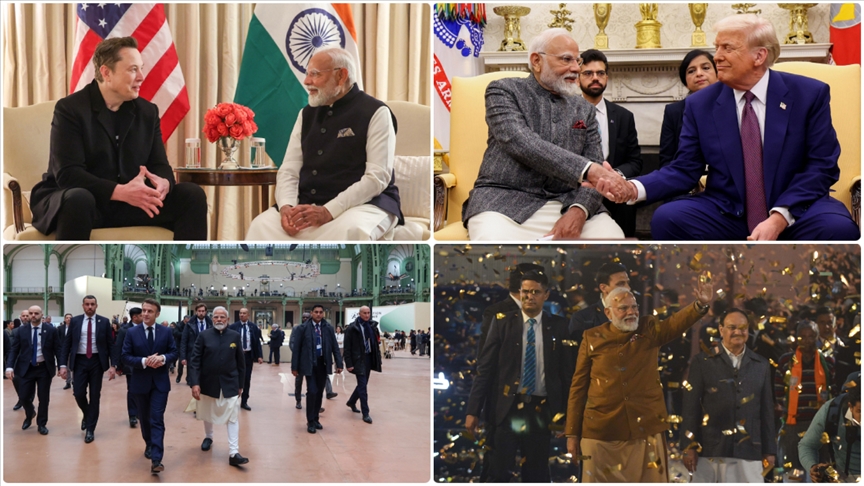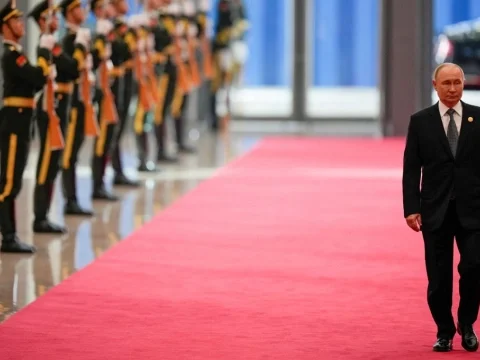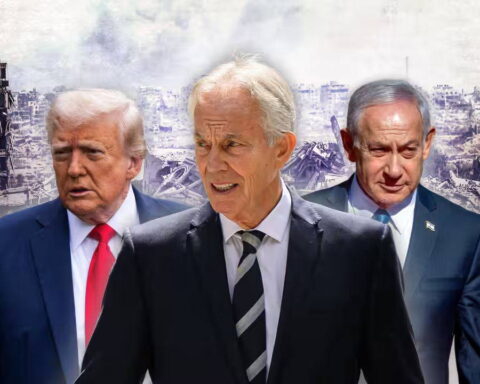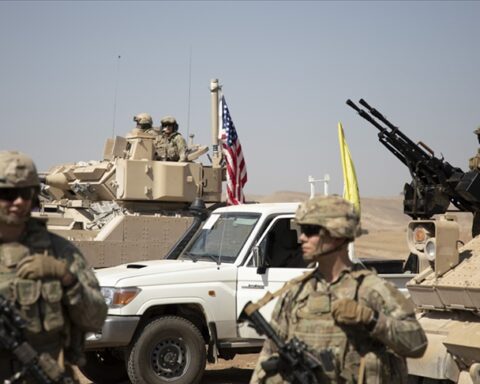The Big Picture-3
In the theater of global diplomacy, India has long mastered an agile balancing act – non-aligned in principle, pragmatic in practice. Today, as geopolitical tensions rise, allegiances shift, and the world order fractures into overlapping spheres of influence, India is again finding itself under growing pressure to recalibrate its posture.
Relations with the United States are particularly strained, as India becomes a leading target of President Donald Trump’s economic nationalism. The Trump administration’s introduction of 50% tariffs on US imports from India – the highest rate the US has imposed on any trading partner – will have substantial economic consequences: the US accounted for 18% of India’s total exports last year.
But this is more than a trade issue. The US and India have been deepening their strategic ties for more than a quarter-century, with the US regarding a rising India as a vital counterweight to Chinese influence in the Indo-Pacific region. But the new tariffs are a stark reminder that even the most robust partnerships are vulnerable to a populist leader’s whims. While the tariffs might augur a brief period of economic friction, they also could end up reshaping the bilateral relationship.
The Trump administration is also alienating India in other ways. In particular, it has been warming to Pakistan, with Trump receiving the country’s army chief, Field Marshal Asim Munir, at the White House, despite his long history of incendiary rhetoric. Munir’s provocations – some issued on American soil – have included nuclear saber-rattling and references to Kashmir as Pakistan’s “jugular vein.” That the US has met such comments with diplomatic indulgence, rather than censure, speaks volumes about the transactional nature of Trump’s foreign policy.
To be sure, such flirtations with Pakistan are more of a strategic irritant than an existential threat. America’s long-term interests – economic, technological, and strategic – still align more naturally with India’s. The challenge lies in managing asymmetries, so that tactical US-Pakistan engagement does not undermine Indian security, especially along Kashmir’s volatile Line of Control, which Pakistan-based terrorists breached this past April to carry out a brutal assault on tourists.
China’s support for Pakistan compounds the risks to Indian security. During Operation Sindoor – India’s reprisal against the Pakistani terrorist attack in April – China offered real-time military and diplomatic support to Pakistan. China is also Pakistan’s largest supplier of military equipment – including weapons that Pakistan has wielded against India.
Moreover, the single largest project in China’s continent-spanning Belt and Road Initiative – which has enabled China to entrench itself in multiple areas of vital strategic significance for India – is the China-Pakistan Economic Corridor, centered on the Gwadar Port in southwestern Pakistan. The project is proof that the China-Pakistan axis is no longer a tactical alignment; it is a strategic entente. As such, it demands a comprehensive response from India, including economic resilience at home, military preparedness along the border, and diplomatic outreach across the Indo-Pacific.
China has also engaged in direct territorial aggression against India. The scars of the Battle of Galwan, a brutal chapter of the Sino-Indian war of 1962, were reopened in 2020, when Chinese troops breached the Line of Actual Control in the Galwan Valley, leading to violent clashes and 20 Indian deaths. China’s high-altitude military deployment along its Himalayan frontier with the Indian state of Arunachal Pradesh compounds tensions.
Amid this upheaval, India’s partnership with Russia has proved resilient. Forged in the crucible of Cold War non-alignment, the bilateral relationship is based on a shared respect for each country’s strategic autonomy. So, while the two countries do not agree on everything, India sources critical defense equipment from Russia, and Russian President Vladimir Putin is scheduled to visit New Delhi later this year. But even here, India has reason to worry: as Russia becomes increasingly dependent on China, India’s own partnership with Russia could become collateral damage.
To mitigate rising geopolitical risks, India is diversifying its international partnerships. With Europe seeking to restructure its supply chains, India saw an opportunity to negotiate a free-trade agreement with the United Kingdom and reinvigorate sluggish trade negotiations with the European Union. Countries like France and Germany are eager to embrace India as a democratic alternative to China.
India is also revitalizing its historical ties to Africa, which, with its favorable demographics and resource wealth, is central to India’s global ambitions. Whereas China has long pursued an extractive approach to the continent, India is working to foster mutually beneficial partnerships, including by expanding Indian investments in health care, education, and digital infrastructure.
In the Gulf, India’s stake is both human and strategic. More than eight million Indians live and work in the region, and their remittances often serve as an economic lifeline for their families back home. But as the Gulf states seek to diversify beyond oil, India has far more to offer: tech, talent, and trade. India’s Comprehensive Economic Partnership Agreement with the United Arab Emirates, as well as its growing defense cooperation with Saudi Arabia, signal a shift from transactional ties to strategic depth.
Within Asia, India surely misses the leadership of the late Japanese Prime Minister Abe Shinzō, who sought to deepen the already close bilateral relationship, especially in the security domain. India would certainly welcome a renewal of this approach from Japan’s current government.
India’s strength lies in its strategic nimbleness. Rather than being bound by rigid alliances, it is guided by interests. So, it engages with the US on defense and technology, with Russia on energy and arms, with Europe on trade and climate, and with Africa and the Gulf on development and the diaspora. But such calibrated complexity demands clarity. India must draw and enforce its red lines on terrorism, sovereignty, and economic coercion. It must invest in its own institutional capacity, from infrastructure development and information technology to diplomacy and defense. And it must continue to champion a vision of global order that is inclusive, rules-based, and democratic.
*Shashi Tharoor, a former UN under-secretary-general and former Indian Minister of State for External Affairs and Minister of State for Human Resource Development, is an MP for the Indian National Congress and Chairman of the Parliamentary Standing Committee on External Affairs. He was re-elected to the Lok Sabha for a fourth successive term, representing Thiruvananthapuram. He is the author, most recently, of Ambedkar: A Life (Aleph Book Company, 2022).
Source: https://www.project-syndicate.org/onpoint/what-trump-s-tariffs-mean-for-india






